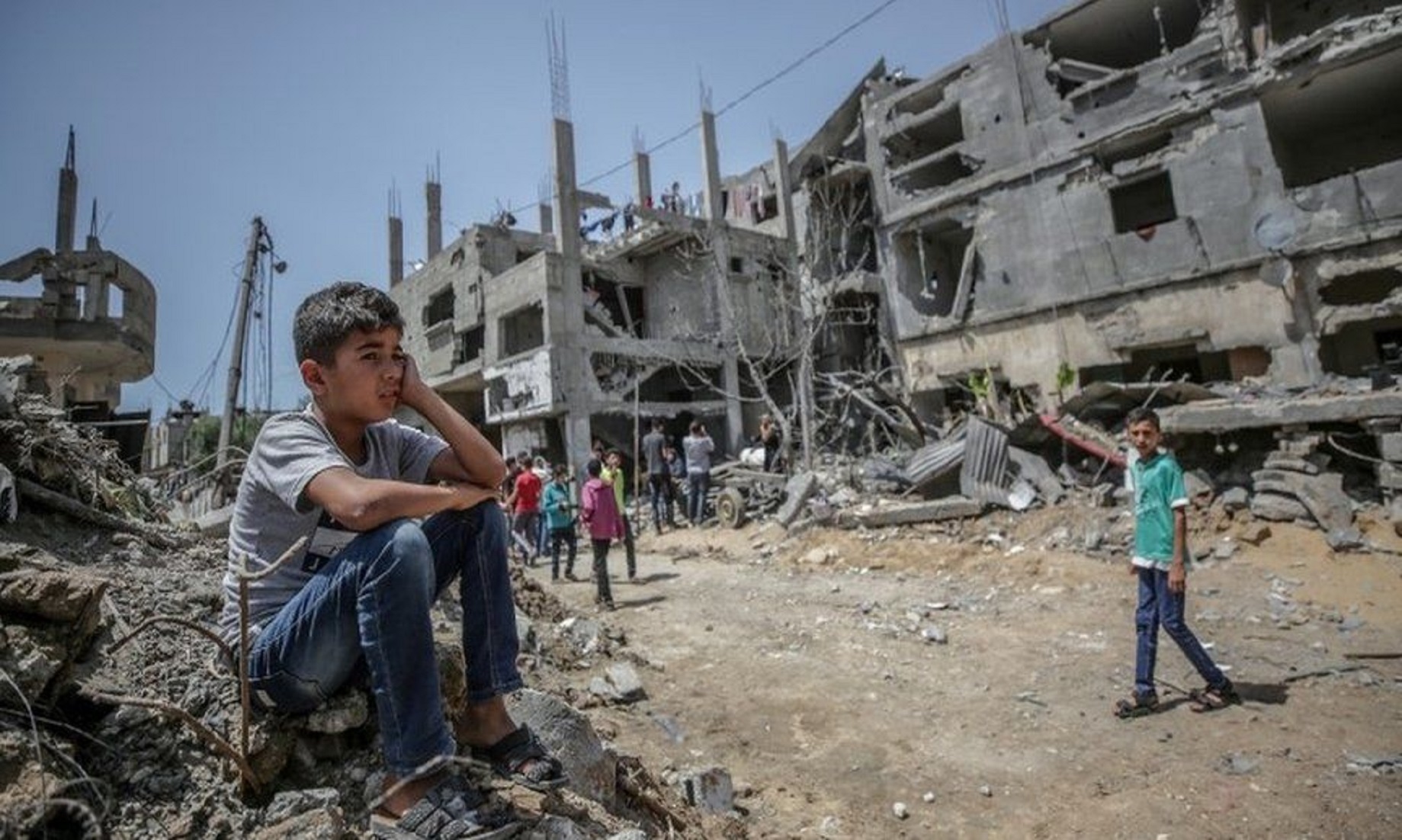by Saud Abu Ramadan
GAZA, May 22 (NNN-XINHUA) – After Israeli jets bombed their apartment in a seven-story building in Gaza city last year, Riyad Ishkontana, 35, and his seven-year-old daughter, Souzi became the only survivors of the seven-member family. Ishkontana’s wife and four other children were killed, and the building they lived in turned into debris.
“I feel sad for losing my wife and four children and everything in the house, including our beautiful memories,” Ishkontana told Xinhua, as he stood on the site where his home used to be, holding his daughter’s hand.
One year has passed since the deadly clash erupted between Israel and Hamas on May 10, 2021, which lasted for 11 days and killed more than 200 Palestinians and about 10 Israelis. The Israeli military offensive, which was launched in response to barrages of rockets fired by militants led by Hamas, stopped after a ceasefire agreement brokered by Egypt.
After the deadly clash ended, Egypt and Qatar pledged one billion U.S. dollars, 500 million each, for the reconstruction in the Gaza Strip. Egypt took the responsibility of removing the debris and building new housing projects in the northern and central Gaza Strip.
Two weeks ago, Adnan Abu Hasna, spokesman of the United Nations Relief and Works Agency (UNRWA) in Gaza, said in a press statement that, the agency had received 60 million U.S. dollars from donors to renovate and rebuild homes in the coastal enclave.
There has already been some progress in reconstruction, with debris removed from Gaza City. However, most of the devastated buildings, including the al-Jalla’ tower, which housed the offices of Al Jazeera TV and the Associated Press, have yet to be rebuilt. On Al-Wahda Street, one of Gaza city’s main streets, scars of the Israeli offensive can still be seen.
“Not just me, but hundreds of people in the Gaza Strip have lost their children and their homes, and they are still waiting for their homes to be rebuilt,” Ishkontana said, adding, “the reconstruction process is going too slowly, and we don’t know when our home will be rebuilt.”
Naji Sarhan, undersecretary of the Hamas-run ministry of housing and public works told Xinhua that, during last year’s Israeli offensive on the Gaza Strip, 1,700 housing units were completely destroyed, including five high-rises, and 60,000 housing units were partially damaged.
“So far, we have only managed to build 200 housing units, since the beginning of the reconstruction plan,” Sarhan said, accusing Israel of exerting pressure on the United Nations and other donors to slow down reconstruction in the Gaza Strip.
“This is what we see today on the ground, many roads are still in dire need of repair,” Sarhan said, adding, such a situation “has frustrated local citizens.”
Although there has been no political solution to the tit-for-tat conflict between Israelis and the Palestinians since last year’s clash, Israel has taken actions to reduce tensions with the Palestinians, mainly in the coastal enclave, by easing restrictions and providing working permits to Palestinians working in Israel.
The Palestinian office of civil affairs at the Erez crossing point on the Gaza Strip’s northern border with Israel, earlier said that, the number of permits for Gazans working in Israel had increased to 12,000 in early April, with Israel promising 20,000 or more if peace prevails.
Analysts, however, fear that the reconstruction process will be hampered by the recent escalation of tensions between Israelis and Palestinians, as a result of frequent Israeli raids on Palestinian towns and villages, and visits by extreme Jewish activists to the Al-Aqsa Mosque compound in East Jerusalem.– NNN-XINHUA





